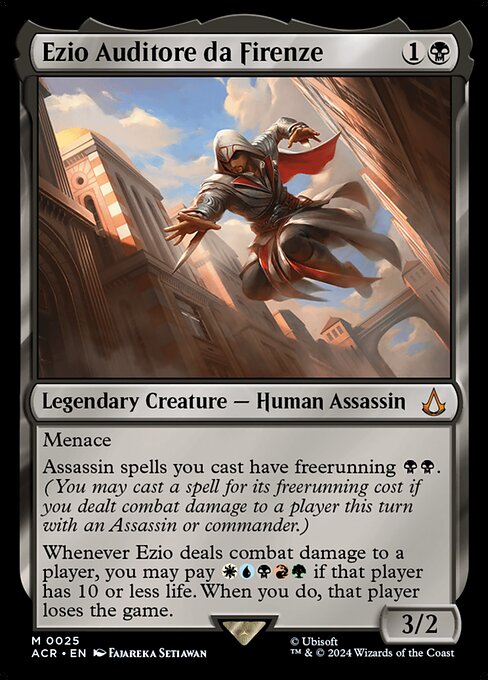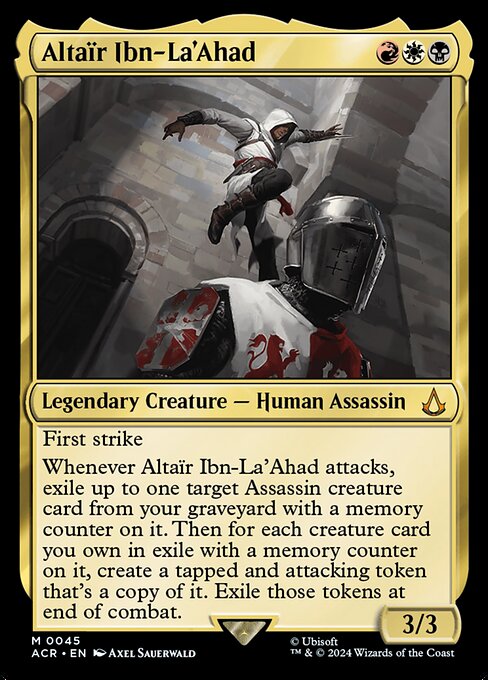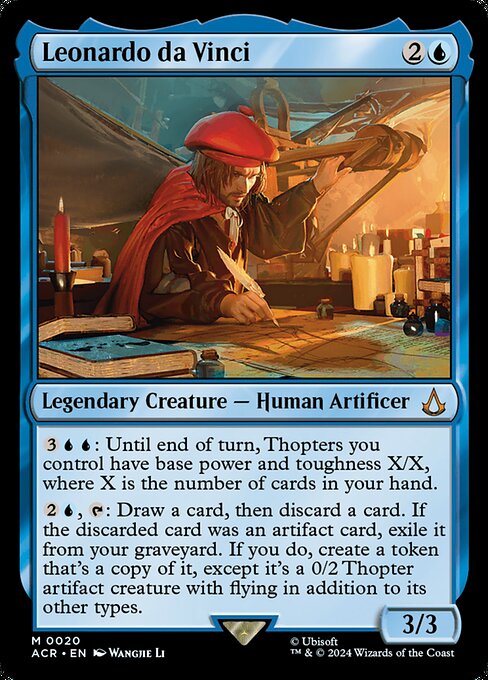Deck & Commander Strategies

Altaïr Ibn-La'Ahad
Exile your creatures and then return them all at once on each attack to create continuous, sneaky combat pressure and maximize value from reanimation effects.

Cleopatra, Exiled Pharaoh
Build a board filled with legendary creatures and +1/+1 counters to outgrow opponents and leverage incremental buffs for a powerful, resilient board state.

Ezio Auditore da Firenze
Develop an aggressive assassin tribal deck that reduces the cost of casts and uses combat damage triggers to assassinate opponents by reducing their life to zero with a powerful activated ability.

Leonardo da Vinci
Utilize artifact graveyard recursion by sacrificing large artifacts and returning them as small thopter tokens, maintaining board presence and generating value from artifact synergies.
Gameplay Insights
- 1
Using Hardened Scales early to put multiple +1/+1 counters on creatures significantly increased combat threat level and synergy with commander abilities.
- 2
Esper Sentinel's card draw trigger was aggressively paid for, showing players’ prioritization of denying card advantage to opponents with low-draw decks.
- 3
Casting assassins at reduced mana costs after dealing combat damage created pressure and tempo swings for Ezio's deck.
- 4
Sacrificing large artifacts to reanimate them as thopter tokens allowed Leonardo to maintain board presence even under threat of removal.
- 5
Players carefully chose blockers to allow growth of key creatures rather than trading them early, preserving long-term threats.
- 6
The interplay between commander damage, combat damage triggers, and activated abilities created multiple layers of tactical complexity and lethal threat calculations.
Notable Cards
-
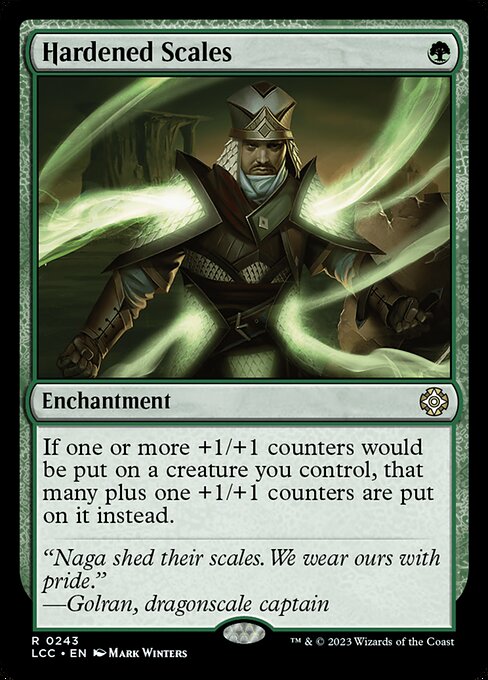
Hardened Scales
-
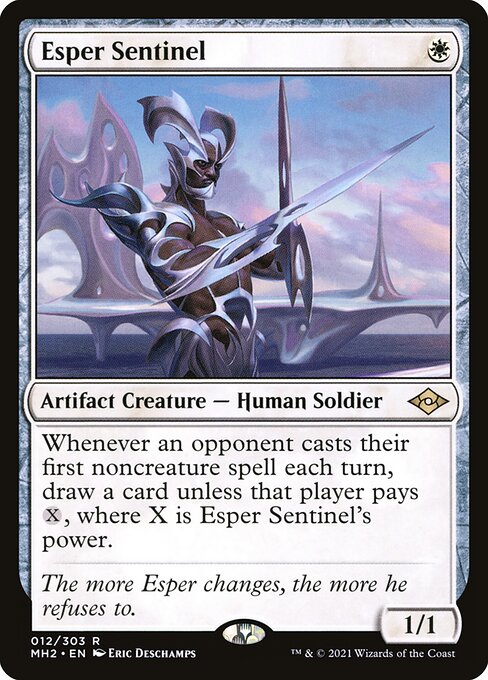
Esper Sentinel
-
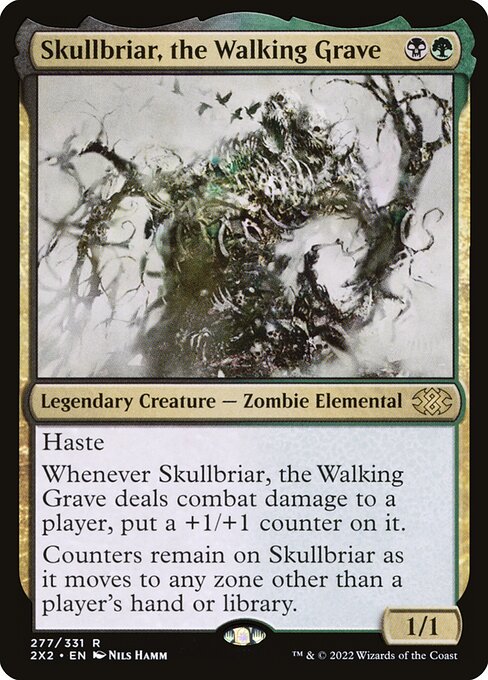
Skullbriar, the Walking Grave
-

Thrill of Possibility
-

Blightsteel Colossus
-

Breeding Pool
-

Nomad Outpost
-
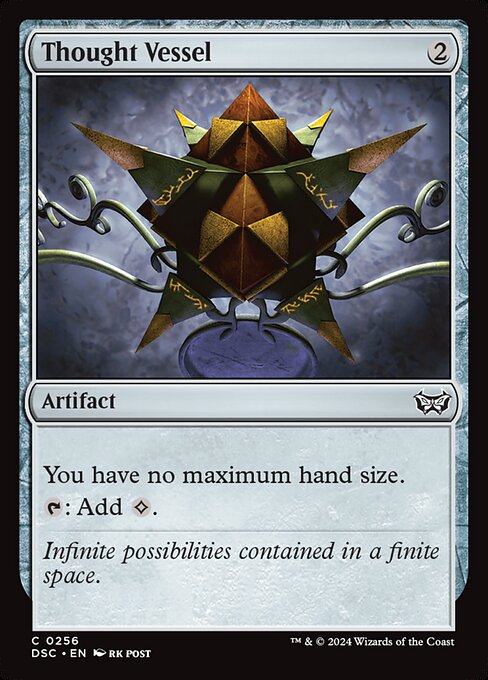
Thought Vessel
Gameplay Summary
The game began with players developing their boards cautiously, each focused on deploying their commanders and supporting synergies.
Altaïr Ibn-La'Ahad started by establishing a presence with creatures benefiting from exile and reanimation mechanics, aiming to leverage his unique ability to bring assassins back on attack.
Cleopatra focused on legendary creatures and +1/+1 counters, developing a board that aimed to grow in power through incremental advantage.
Ezio Auditore da Firenze's player built around an aggressive assassin tribal strategy, using cost reductions and a lethal activated ability to threaten opponents directly.
Leonardo da Vinci’s deck took a more artifact-centric approach, sacrificing and reanimating artifacts to create token thopters and generate incremental advantage with big artifacts turned into small but recurring threats.
Early turns saw minor skirmishes and board development, with each player carefully managing resources and setting up their win conditions. Mid-game momentum shifted as Ezio's assassin synergies began to accelerate, casting multiple assassins cheaply and pressuring opponents with potential instant kills on low-life players.
Altaïr’s exile-and-return combo posed a constant threat with recurring attackers, while Cleopatra’s buildup of legendary creatures and counters started to tip the scales in her favor.
Leonardo’s artifact recursion strategy proved resilient, continually replacing threats and maintaining board presence despite opponents' attempts to remove key pieces.
Key moments included combat damage triggers enhancing creatures and threatening to finish opponents via commander damage or direct assassination effects.
The game featured a tense balance of board control, damage racing, and strategic resource management, with players jockeying for lethal positioning.
Ultimately, the game revolved around the interaction of aggressive assassin tactics, artifact recursion, and counter-based board growth, highlighting the unique playstyles of each commander and their decks.



